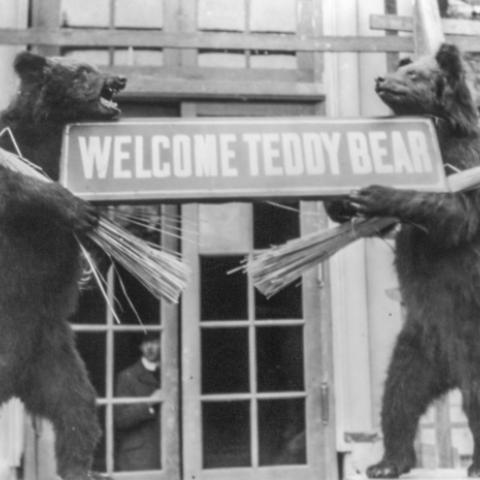
Legendary Theodore Roosevelt
Welcome to the Land of the Legendary
Theodore Roosevelt invites you to experience the sights and sounds of his North Dakota.
Theodore Roosevelt: The Man, The Legend
How was the legendary president connected to North Dakota?
In September 1883, New York assemblyman Theodore Roosevelt came west to hunt bison and fell in love with the rugged lifestyle and "perfect freedom" of the Badlands. This experience inspired him to invest in the Maltese Cross Ranch.
Few realized at the time that what started as a desire by an Easterner to see the great American West before it disappeared would lead to a long-lasting relationship between the rough and rugged North Dakota Badlands and the future president.
While that first hunting trip ignited his passion for Dakota Territory (North Dakota in 1889), the tragic loss of Roosevelt’s wife and mother on Valentine’s Day 1884 drove an emotionally crushed man to the Badlands to mourn, reflect and re-energize.
"The light in my life has gone out." - Theodore Roosevelt
During this visit, Roosevelt established the Elkhorn Ranch that he often referred to as his “home ranch.” He would return to North Dakota to hunt or tend to his cattle business in 13 of the next 14 years and on various campaign “whistle stops” through 1918. His adventures in the Badlands are the stuff of legends, beginning with a successful ranching operation he ran from the comforts of the Elkhorn Ranch cabin in 1885 and 1886.
As a Billings County deputy sheriff in 1886, Roosevelt and two ranch hands chased down three boat thieves just as the spring thaw was breaking up ice on the Little Missouri River. The perilous ordeal covered 300 miles in sometimes bitter cold and took two weeks to chase down the thieves and turn them over to authorities in Dickinson.
Roosevelt ranched until a long, cold winter in 1886-87 decimated much of his ranching interests. He lost more than half his cattle and by the early 1890s abandoned the Elkhorn Ranch site and returned to the Maltese Cross Ranch. He sold his last stock in 1898 and returned to politics and other adventures.
See Theodore Roosevelt's trail and legacy throughout the state here
Presidential Library will Preserve Roosevelt's Legacy
The Theodore Roosevelt Presidential Library and Museum in the Badlands at Medora will showcase the legendary adventures and lasting legacy of the first "conservation president" and highlights include:
- Natural Integration: It is naturally integrated with the landscape on 93 acres of Badlands.
- Outdoor Features: It features looped walking paths offering spectacular views of the valley and Medora, and connects to the 144-mile-long Maah Daah Hey Trail.
- Unique Architecture: A sloping prairie rooftop invites visitors to walk up for a higher view.
- Interior Experience: The 93,000-square-foot interior houses immersive exhibits, thousands of artifacts, a recreation of Roosevelt’s Elkhorn Ranch cabin, and digital documents.
- Community Amenities: It includes community spaces, a café, and a 300-seat auditorium.
- Sustainable Design: The library is designed for sustainability, aiming for zero energy, water, emissions, and waste.
"I never would have been President if it had not been for my experience in North Dakota." - Theodore Roosevelt
In between annual return trips to the Badlands over the next several years, Roosevelt led the Rough Riders’ famous charge up San Juan Hill in 1898 during the Spanish-American War. And by 1900, Roosevelt was on a whistle stop tour when he told the crowd in Medora that the Badlands were where “the romance of my life began.”
Roosevelt was sworn into office as the 26th President on Sept. 14, 1901, after the assassination of William McKinley. He was elected to a full term in November 1904 and afterward returned often to visit North Dakota.
During his administration, Roosevelt oversaw the creation of the Department of Commerce and Labor and National Forest Service, signed the Antiquities Act and created the first federal bird sanctuary. In 1906, he won a Nobel Peace Prize. Roosevelt’s love for “the great free ranches” created his commitment to the conservation of America’s natural resources.
Throughout his life and even into his later years he continued to visit the Badlands to feel the freedom of the west again. By the time of his death at home in 1919 at the age of 60, Roosevelt had become a legend that lives on today in North Dakota's rough and rugged Badlands.
In 1947, President Harry S. Truman signed the bill creating Theodore Roosevelt National Memorial Park. In 1978, President Jimmy Carter signed legislation recognizing it as Theodore Roosevelt National Park, the only national park named after a person.




